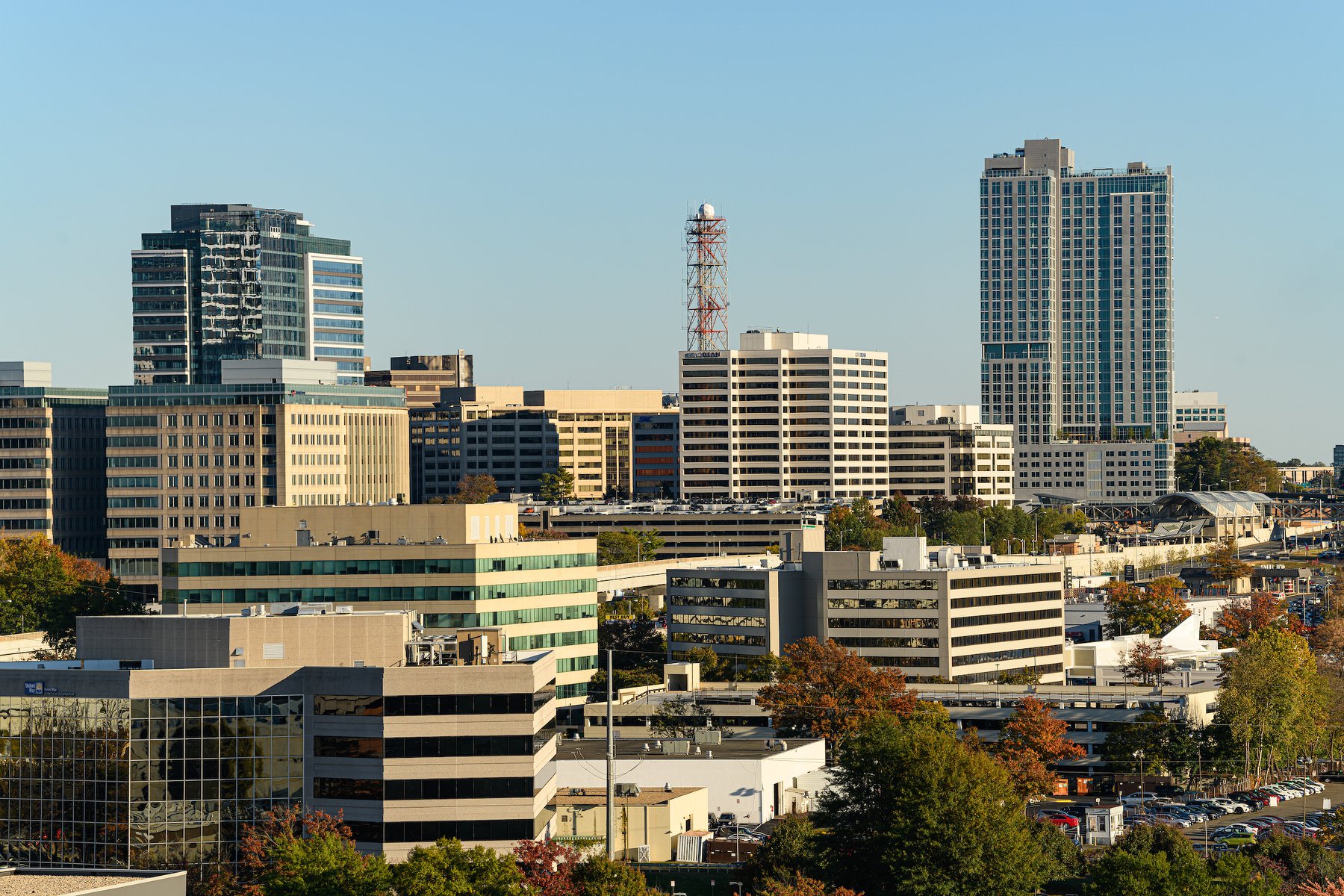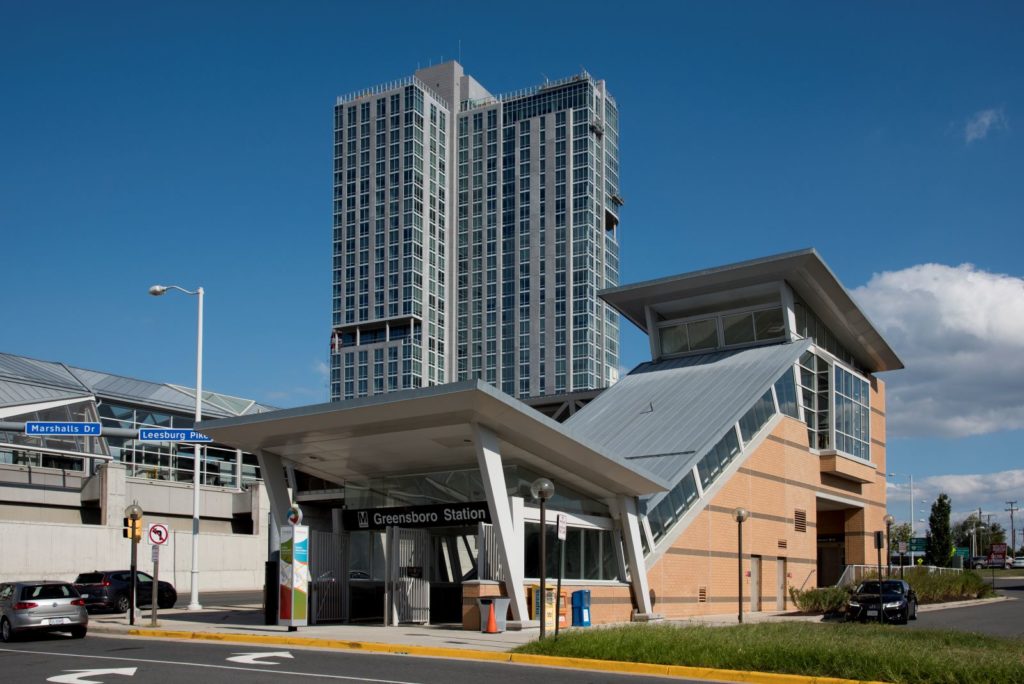E-Newsletter
Tysons vision at 10 years: Q&A with Sol Glasner of the Tysons Partnership
Created with the mission of “Building America’s Next Great City,” the Tysons Partnership is a group of Tysons stakeholders working together to guide and accelerate the transformation of Tysons. This year the Tysons Partnership is celebrating the 10-year anniversary of Fairfax County’s Comprehensive Plan to transform the area into a transit-oriented, walkable, green urban center by 2050.
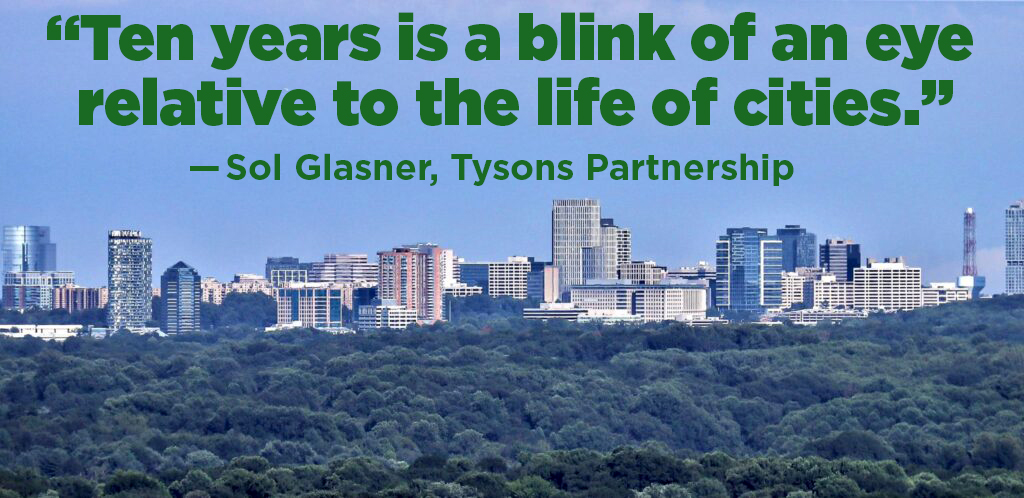
Timed to take advantage of the four Metro stations that were coming to Tysons in 2014, the ambitious 2010 Comprehensive Plan approved by the Fairfax County Board of Supervisors aimed to transform Tysons into an urban center with up to 100,000 residents and 200,000 jobs by 2050.
Already the largest commercial district in Fairfax County with more than 28 million square feet of office space, ranking it among the top 15 business districts in the nation, Tysons is envisioned as the county’s downtown — a 24-hour urban center where people live, work and play. The plan recommends that three-quarters of future growth be within a half-mile of the Metro stations, allowing residents, workers and visitors to get around on foot, bicycle, bus or rail.
Members of the Tysons Partnership engage with state and local government, landowners, and other stakeholders to ensure that the overarching goals and objectives of the Comprehensive Plan for Tysons are achieved. The plan’s core areas of focus are land-use policy, placemaking, member engagement and events, marketing, and transportation.
The FCEDA caught up with Tysons Partnership President and CEO Sol Glasner to get an update on the progress that Tysons and the Partnership have made in the past decade. Glasner has been associated with the Partnership from its inception and served as board chairman from 2012 to 2014. Glasner also served for 22 years as general counsel of The MITRE Corporation, a systems engineering firm with a large corporate presence in Tysons. MITRE is a founding member of the Tysons Partnership.
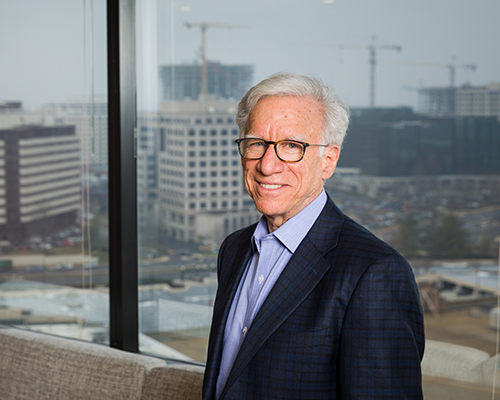
Sol Glasner, president and CEO of the Tysons Partnership. (Photo courtesy of Virginia Business)
FCEDA: Tell us a little bit about why the Tysons Partnership exists.
Glasner: I’m always fond of saying if it didn’t exist, we’d have to invent it. This is because what the Partnership is all about is catalyzing the implementation of the Comprehensive Plan which was adopted 10 years ago. The Partnership is a classic public/private model and the county is very much engaged with us. They have a membership on our board, along with private stakeholders representing the entire spectrum of stakeholder interests in Tysons, including in retail, hospitality, office, real estate developers, brokerages, etc. The residential groups are also represented within the partnership. We look at the vision that the plan laid out. We’re basically all about catalyzing actualization, the realization of the urbanized, walkable, ease of convenience, growth opportunity that is all about Tysons.
FCEDA: How is the Partnership celebrating the milestone?
Glasner: We had all kinds of great ways in which we were going to go out and celebrate this milestone of a decade toward what was billed as a 40-year project in very public fashion with large gatherings. But, of course, the pandemic intervened and those celebrations are now on hold.
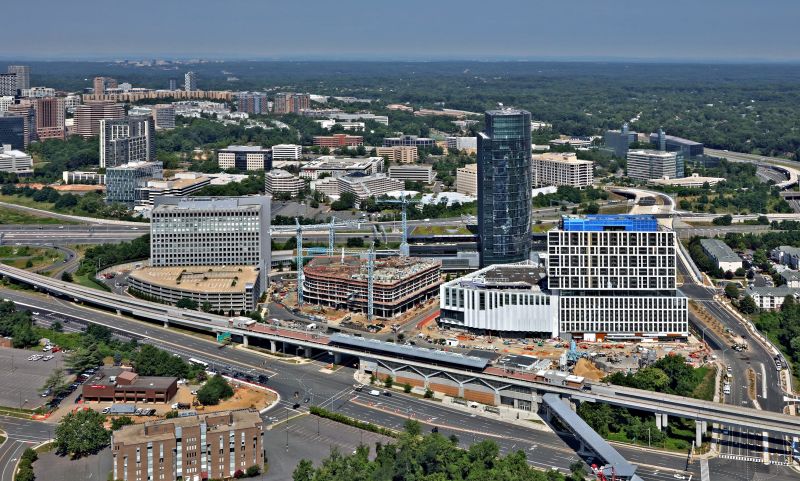
Transformation continues at the Capital One Center. Scheduled to open in 2021 is a new 1600-seat performance hall called Capital One Hall. (Photo courtesy of Capital One Center)
FCEDA: The plan that the Fairfax County Board of Supervisors adopted was really a groundbreaking vision for Tysons and the county. Can you give us an overview of the Comprehensive Plan changes and the vision?
Glasner: The county had extraordinary vision in anticipating the arrival of Metro. Back in 2010, really before that, the county envisioned the “world of opportunity” coming with the arrival of Metro with four station stops midway between the nation’s capital and Washington Dulles International Airport.
So with that in mind and recognizing that Tysons truly is the economic engine for the county, with less than 1 percent of the land mass and with 1.7 percent of the population, yet providing 18 percent of the county’s revenues. And Tysons is the second-largest employment center in the region, second to the District of Columbia.
The fundamental point is that Tysons represents an extraordinary concentration of economic resource, and that was as true in 2010 as it is today.
The vision was to move away from the “suburban edge city,” which basically was Tysons at the time, a major retail mall mecca with its two major malls, along with acres of office parks and surface parking to go with it. So the county decided to change that model, add more density, get more people to live there and make it transit oriented. The central vision is to build clusters around the metro stations where people can actually live, walk to work, and play.
Why does the county want to do that? Because the county wants the golden goose to be more golden.
The comprehensive plan proposition is really about creating eight neighborhoods. Think two concentric circles around each of the four Metro stations. Those neighborhoods will develop with their own vibe and their own texture. Now how do you get all of that to stitch together? The Tysons Partnership is the one to connect the dots.
The Tysons skyline, looking east. (Photo courtesy of Rassi Borneo)
FCEDA: What progress has been made in the past decade? And what challenges do you see ahead?
Glasner: Tysons is a long-term project. Ten years seems like a long time, but 10 years is a blink of an eye relative to the life of cities. Forty years isn’t that long either in the lifespan of a city.
How do I measure success? We can rattle through a bunch of statistics that show the absolutely extraordinary pace of development that has taken place since 2010. We can talk about the increase in the number of employees, and the dramatic increase in the number of residents. Actually, most of the new development that’s taking place in Tysons is residential. We can look at all these objective data points and say, well, there’s a marker of success.
But I’m going to think about it in a far more subjective way, because when I interact with stakeholders and with county government and the general public, what I’m getting is that people have bought into and embraced this idea that we really are developing an urban center — a destination.
What are the challenges that we have to solve? If I had to pick a single one of the challenges that have to be addressed, it’s about creating a truly walkable environment. We have it now in Tysons, in places, but connecting it all together is a goal. There’s been huge progress there. We can point to the road infrastructure that’s been improved, but there’s a lot more that has to be done.
The other major challenge is housing, specifically housing affordability. We have to have a model that allows people who work in Tysons to live in Tysons, if they choose to, and not only the white collar workers. We want to solve the dependence on the motor vehicle by getting people to be able to live more closely to their workplaces.
FCEDA: Can you talk a little bit about the re-branding process the Partnership has undertaken?
Glasner: We are in the process of a multi-level rebranding of Tysons. Let’s start with identifying what Tysons means to people. So if I say Manhattan, Beverly Hills, Los Angeles, or Chicago, to most people instantly there’s a mental image that comes to mind. Those images, in some cases, given the names that I mentioned, were cultivated over two to three hundred years. We need to find that identity.
The Partnership spent close to nine months in various focus groups, in research, in discussions with our stakeholders to find the key threads that define Tysons. We summarized them as growth, possibility, ease, and convenience. These are things that resonate with people. But those are just abstractions. We need to tie them into a branding package that communicates these concepts to people in a way that they could then internalize. So literally as we speak, we are in the process of identifying a visual image for Tysons that will become our brand. You’ll see a lot a lot of manifestations of that. Watch for more to come.
The Greensboro Metro Station and the Lumen at Tysons behind it. (Photo courtesy of the Lumen at Tysons)
FCEDA: What role do you see Tysons playing in the post-pandemic recovery?
Glasner: We’re in the middle now of a public health emergency which has spawned all manner of economic dislocation. We see Tysons as offering a major piece of the way forward to recovery because of all the ingredients and factors that make Tysons an economic mainspring for the county. If we are going to dig ourselves out of the economic repercussions caused by the public health emergency, countywide and region-wide, we need Tysons to succeed. And in order for Tysons to succeed, we need the Tysons Partnership to be configured in a way that it is primed to fulfill the expectations that the county and the citizens in the county have of what we’re supposed to be doing in the form of a public-private partnership.
FCEDA: Do you see any silver lining for Tysons in 2020 for what we’ve gone through with the pandemic?
Glasner: When you say silver lining, I immediately think of the Silver Line, which is the lifeblood for Tysons. So pun intended, right?
Most importantly I think what we have demonstrated and actually succeeded in doing is working together collectively, pooling resources, and sharing ideas. Our ticket to overcoming the transitory challenges we are facing is what I’ve seen among our Tysons stakeholders. People have stepped up to the plate in terms of pivoting to make as much lemonade as you can out of the lemons. So how the employers and employees are working together in order to address this challenge is absolutely key. Based on everything that I’ve heard from our stakeholders in various conversations and the feedback we receive, this is a real success story in Tysons.
I’m very bullish about Tysons over the long term. I’m not going to be Pollyanna and say that we don’t have challenging times that we have to get through. We will get through them. Building a city, building an urban environment, is a decades-long project and we are working in Tysons Partnership to bring the entire community together, all the stakeholders together with the county, together with all the private actors and the residents. And we’re helping to make it happen.
September 17, 2020
News Travels Fast
Stay ahead of the curve with the latest business news from Northern Virginia. Receive updates on moves, incentives, workforce, events and more.
